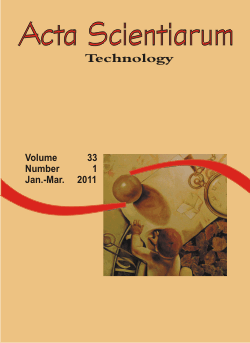<b>Analysis of surface topography in electrical discharge machining of ABNT M2 high speed steel</b> - doi: 10.4025/actascitechnol.v33i1.6763
DOI:
https://doi.org/10.4025/actascitechnol.v33i1.6763Keywords:
electrical discharge machining, dielectric fluids, craters and surface topographyAbstract
The electrical discharge machining is an exceptional procedure for machining complex shapes into electric conductor materials, mainly for those of high hardness, difficult of machining by traditional processes. At each discharge, a crater is formed in the material and a small crater is formed in the electrode. From every molten material produced in each discharge, only 15%, or less is removed through the dielectric liquid. The remaining of molten material solidifies forming a wrinkled surface. The characteristics of the obtained surface, as overlap of craters, globules of sullage, “chimneys", bubbles (formed when trapped gases are released through the resolidified material), are revealed through an analysis by scanning electron microscopy. The proposed study aimed to examine the effect of several dielectric fluids, on the surface topography and material removal rate, in workpiece of high speed steel (ABNT M2), during the electrical discharge machining.Downloads
Download data is not yet available.
Downloads
Published
2011-02-04
How to Cite
Rodrigues, J. R. P., Cruz, C., & Franco, S. D. (2011). <b>Analysis of surface topography in electrical discharge machining of ABNT M2 high speed steel</b> - doi: 10.4025/actascitechnol.v33i1.6763. Acta Scientiarum. Technology, 33(1), 27–30. https://doi.org/10.4025/actascitechnol.v33i1.6763
Issue
Section
Mechanical Engineering
License
DECLARATION OF ORIGINALITY AND COPYRIGHTS
I Declare that current article is original and has not been submitted for publication, in part or in whole, to any other national or international journal.
The copyrights belong exclusively to the authors. Published content is licensed under Creative Commons Attribution 4.0 (CC BY 4.0) guidelines, which allows sharing (copy and distribution of the material in any medium or format) and adaptation (remix, transform, and build upon the material) for any purpose, even commercially, under the terms of attribution.
Read this link for further information on how to use CC BY 4.0 properly.











8.png)




